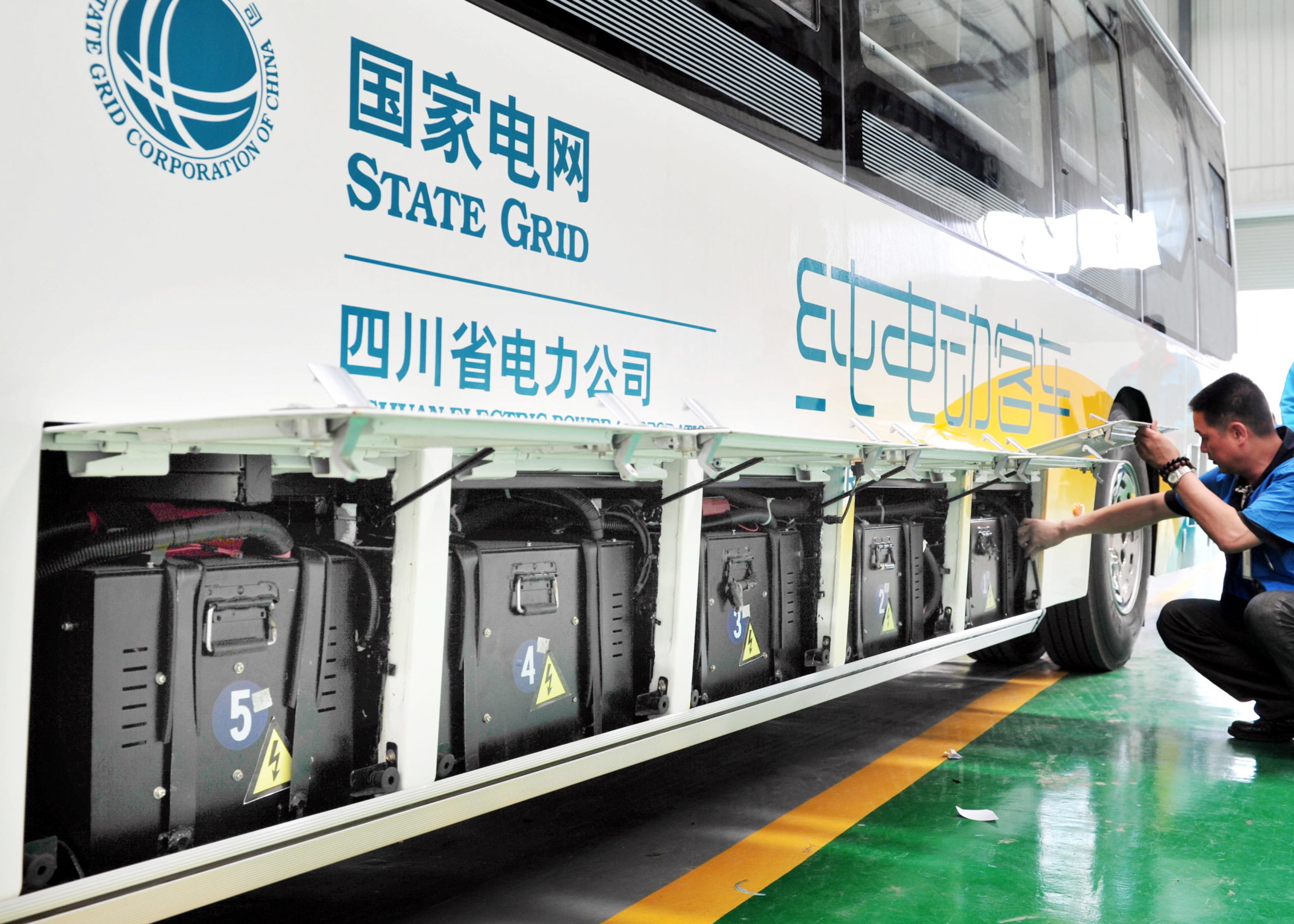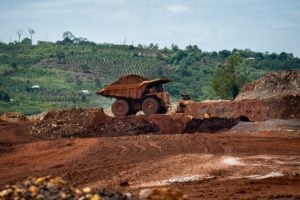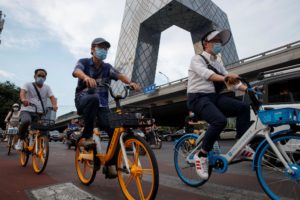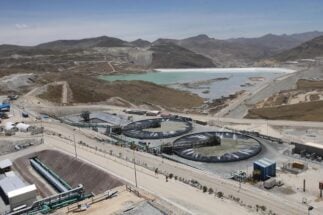Prices for the raw materials needed for electric vehicle (EV) batteries have spiked since the end of last year, causing headaches for EV manufacturers and giving new urgency to the need to improve battery reuse and recycling. Lithium price rises have been particularly eye-catching. Costs of compounds such as lithium carbonate and lithium hexafluorophosphate have jumped on Chinese markets, with the latter rising from 110,000 yuan per tonne early this year to a four-year high of 270,000 yuan (US$41,800). The costs of metals in ternary lithium batteries – which use nickel, cobalt, and manganese oxides as anode material – have also gone up significantly.
Both demand and supply have contributed to the rise. There has been rapid growth in EV sales, and, due to factors including low commodity prices and Covid-19 disruption, supply cannot meet demand. Many authoritative bodies such as the International Energy Agency (IEA) predict that action on climate change will drive global demand for EVs and energy storage – carrying battery prices higher still. This means high prices for lithium, nickel and cobalt can be expected for the coming three to five years, according to some industry forecasts.
Demand for EVs in China is bound to continue growing quickly as the shift to low-carbon energy accelerates. Calculations by the IEA show that, under current policy, sales of EVs in China will leap from the 1.3 million recorded last year to 9.5 million in 2030. Ensuring a steady supply of raw materials, at stable prices, will be crucial for the sound development of the sector and a smooth energy transition. It also highlights the importance of recycling used EV batteries, not only to conserve resources but also to reduce reliance on imports and keep costs stable.
What is EV battery recycling?
Most EV batteries have a lifespan of between five and eight years. Failing to properly handle batteries after that causes pollution, and is also a huge waste of resources. Old EV batteries can be either reused in less demanding “cascade utilisation” applications or dismantled for recycling. The former is suitable for batteries that are still usable but can no longer provide the level of power needed by an EV. These usually retain 80% of their capacity and can be repurposed for less energy-intensive roles, such as in energy storage facilities. Recycling, on the other hand, means dismantling the battery to recover valuable materials such as nickel, cobalt and lithium.
Cascade utilisation means repurposing used products or substances, with the sequence of uses known as the cascade. One example is breaking down old timber floorboards for reuse in wood–plastic composite floorboards.
Making producers responsible for battery recycling
These issues have already received a lot of government attention. A policy on old EV batteries was first proposed in a 2012 State Council plan on developing the energy saving and EV sector up to 2020, with a cascade utilisation and recycling system established, and the rights and responsibilities of involved parties made clear. In 2016, a technical policy document on recycling such batteries was published, stating this would be an “extended producer responsibility” (EPR) system.
The State Council defines an EPR system as extending the manufacturer’s resource and environmental responsibilities from the factory to cover all stages of the product lifecycle: design, logistics, consumption, recycling and disposal. Similar policies are used worldwide in the recycling of waste such as electronic equipment, lead–acid batteries and vehicle tyres.
A 2018 interim policy for managing EV battery recycling stated that EV manufacturers are responsible for recycling batteries from their vehicles. It said manufacturers should set up collection points alongside their retail networks to accept old batteries for transfer to recyclers with whom they should enter contracts. The document also encouraged EV manufacturers to strengthen links with battery makers and recycling firms, to spur both cooperation between sectors and a market-based system for recycling and reusing old batteries.
The status quo
Although it’s now clear EV manufacturers bear responsibility for recycling batteries used in their vehicles, having them live up to that responsibility is another matter.
The first challenge is giving the battery a “health check”, to determine if it is better suited for cascade utilisation or recycling. The technology for this is not yet mature, creating a bit of an obstacle to large-scale cascade utilisation. In April, there was an explosion at an energy storage facility in Beijing’s Fengtai district. The blast prompted a response from the National Energy Administration in the form of a draft document on managing energy storage facilities. Published in June, it stated that no large-scale energy storage projects relying on old EV batteries should be created until a reliable system for testing and assessing battery functionality is in place, and there are breakthroughs in technologies for managing “cell consistency” – meaning consistency across cells in a battery storage pack, in terms of, for example, capacity and internal resistance. The final version, published in September, relaxed this moratorium, but still set strict requirements for such facilities to be built.
Testing requires the battery to be dismantled first. As EV batteries vary in size, shape and chemical make-up, automating this process is difficult. Currently, most recycled batteries are dismantled and tested manually, and expensively.
Techniques for recycling raw materials also need to be improved. The hydrometallurgical process commonly employed in China – which involves using aqueous chemistry to obtain metals from ores, concentrates and recycled materials – is cheap but recovers little other than the valuable metals.
Also, EV batteries in private vehicles are the property of the vehicle owner, and there are no rules on who they should hand old batteries over to. That means a significant proportion end up improperly recycled on the informal market. Meanwhile, many legitimate manufacturers and recyclers are unable to get hold of the old batteries they need, preventing the market from scaling up and making it harder for recyclers to turn a profit.
Some policy suggestions
In recent research, we reviewed China’s policy on old EV batteries. Based on that work, and the current state of the industry, we make the following three suggestions.
First, prioritise the collection and safe storage of old EV batteries. Given that the technology here is not yet mature, it is unlikely there will be any short-term leaps in capacity for cascade utilisation or recycling. The focus for now should therefore be on ensuring all old batteries are collected and safely stored, to avoid secondary pollution. We can then look at gradually increasing reuse and recycling capacity. Looking at best practice abroad, the EU has a proposed new regulation on waste batteries that may include collection-rate targets for EV batteries.
Second, establish recycling for “orphan” batteries. When a producer goes bust, who takes on extended producer responsibilities for their “orphaned” batteries? While China’s biggest EV manufacturers are well established, some smaller firms are being squeezed out as traditional vehicle makers also get in on the act. Incomplete data indicates that there were as many as 100 EV makers in 2014, including some fleetingly famous names such as Youxia and Byton. But those firms are struggling if not already bust. Their orphan batteries are at risk of being recycled in polluting and unsafe informal workshops.
Third, crack down on informal recycling. This would make it easier for legitimate recyclers to obtain batteries, regularising the market and encouraging healthy competition and research. Alongside that crackdown, methods such as public education and deposit-return schemes could be used to encourage the public to stick to the proper channels and make it harder for the black market to survive. Although we know of no examples of a deposit scheme being used for EV batteries, figures from the UK Parliament’s Environmental Audit Committee show they can raise recycling rates for plastic bottles to 80-95%.
In order to rapidly achieve its targets of peak carbon by 2030 and carbon neutrality by 2060, expediting the low-carbon energy transition will not only help China with its goal of sustainable development, but is also part of its responsibilities as a major power. The energy transition is a complex process, involving changes to the energy mix and every aspect of associated industries. Key technologies for that undertaking, including EVs, require large quantities of metals which China currently imports, creating a supply chain security issue. Better recycling and reuse would help resolve that, as well as promote China’s construction of an “ecological civilisation”.








